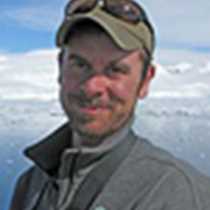Glacier Bay National Park
In a world where everything seems to be advancing at an eagles pace it is refreshing to find a corner of the world that inches along more like, well, a glacier. To our eyes aboard National Geographic Sea Lion the entrance to Glacier Bay National Park and Preserve varied little from the coastal forests and mountainous terrain we have been witness to for the past five days. However, while this extreme NW corner of the inside passage is indeed inching along much like many of the worlds glaciated areas, this has not always been the case- at least not in geologic terms.
An early morning stop in Bartlett Cove to pick up our two Forest Service Rangers began a day of cultural and geologic discovery, a mere 217 years after another Discovery, captained by George Vancouver came to this same area. He ended up returning from his explorations with news that a huge wall of ice filled what we now know as Glacier Bay. As our Cultural Interpreter, Bertha explained, the ice wall was not always sitting in the place Vancouver found it. Through the oral tradition of her native clan, a story has emerged (dating back to the 16 hundreds) that the waters through which we entered the park were not always there, nor the glacial face that Vancouver saw. As recently as four hundred years ago small clans of Hoonah Indians lived on what are now the wide waterways through which our vessel cruised in and out of the park- places that have since been overrun by rapidly advancing ice and subsequently inundated with sea water upon their even more recent retreat. This geologically speedy leveling has left our generation with 65 miles of some of the planets finest fjord land.
Our first step back towards those retreating glaciers took us to a place called South Marble Island. Amidst a landscape often regarded as being successfully premature we found a small island filled with life. Barking Steller sea lions crowded the glacially polished rocks while Tufted Puffins and Pigeon Guillemots bobbed on the water’s surface. From above came the communal squawk of hundreds of frenzied Glaucous-winged gulls as a lone Bald Eagle soared in looking for a meal. From here we went a mere 15 years worth of glacial retreat (10 miles) to find our first terrestrial mammals in the park- mountain goats. Hugging the near vertical cliff faces at the water’s edge, we were able to approach numerous adults and kids alike in their death defying acts of navigation. One creamy dot on the cliff face lead to another as guests and naturalists alike spotted over 12 individuals in a one mile stretch.
Not to be outdone, we were soon in the presence of an even more respected terrestrial mammal, the grizzly bear. Respected not as much for its balance perhaps but for that certain something a wild animal with four inch claws and bulging necks muscles seems to demand. Lumbering by its lonesome, this two toned individual (nearly blond on its back with jet black legs) was found a couple hundred feet above the water. Grazing on whatever it could find in this pre-salmon spawning, pre-berry time of year.
Our northernmost stop of the day revealed part of the recoiled giant Bertha’s tribe has been talking about for over 400 years. The Grand Pacific and Margerie glaciers come face to face at this northern extreme of the park at the head of Tarr Inlet. One born from a land of solid rock and cleanliness and the other (Grand Pacific) from a winding path of loose rock and gravel that now coats its surface. We took a wonderfully calm 45 minutes in front of these contrasting ice fronts to contemplate the time and energy required to create their hulking forms, much less the destruction left in their wake. Those, like Bertha’s elders will never forget their path and the role it played in their lives.




